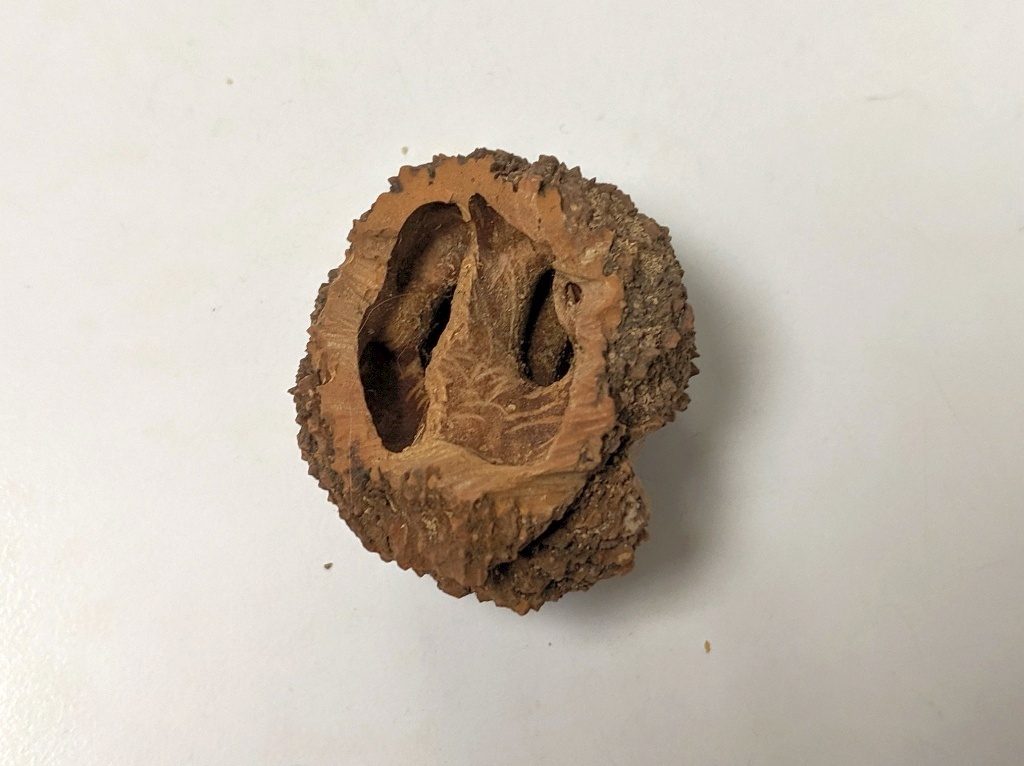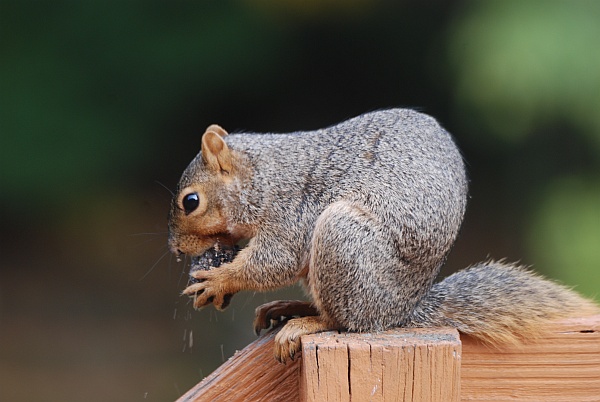

This nutshell is empty and carved with large holes. Their shape and placement tell us who made them.
In the autumn black walnuts ripen and fall from the trees. They’re covered in yellow-green husks that exude a black stain when you open them.

Squirrels don’t care about the stain. They chew off the husk and gnaw the wooden shell.

They make four holes, two on each side of the shell. The side that opens quickly is gnawed into one large hole. By their shape you can tell that a squirrel ate the nutmeat.
This fox squirrel gnawed a black walnut in Donna Foyle’s backyard in 2014. Find out how long it took him in How To Open A Black Walnut.
(photos by Kate St. John and Donna Foyle, per the captions)
Well now I know who buries the walnut husks in my flower pots. It was quite a surprise the first time I found one. It’s like finding a tennis ball in the pots.
There are no walnut trees in my neighborhood, but I have found over the years a few walnut shells with holes like that in my garden. Do fox squirrels travel long distances and bring them back to their territory?
Hello!
I’m working as a contracted instructional designer for the nonprofit, Adventure Scientists. I’m building an e-learning course to teach volunteers how to take genetic samples of black walnut in a year-long citizen science project. The project is designed to collect genetic data in an effort to catch illegal timber thieves. Trees are mostly stolen from protected forests preserved for wildlife. I would like to use some of your photos of the e-learning course. Please let me know if you would grant permission.
Thanks so much.